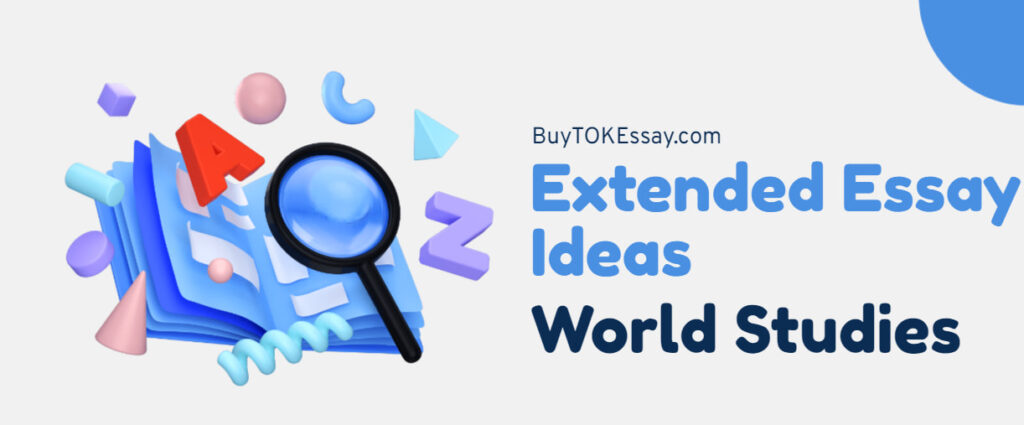Students must thoroughly comprehend the extended essay rubric to succeed in the International Baccalaureate (IB) program. This essay is an essential part of the IB curriculum, and understanding how the grading process works can help you do far better. The goal of this article is to provide a thorough explanation of the extended essay rubric with a marking scheme and grading criteria.
What Is an IB Extended Essay Rubric?
Examiners use the extended essay rubric as one tool to evaluate your work. It has many requirements, each focusing on a distinct facet of your essay. It is essential to comprehend each criterion to maximize your score. The IB EE rubric is divided into five primary portions and is scored out of 34 points:
- A – Focus and Method (6 points).
- B – Knowledge and Understanding (6 points).
- C – Critical Thinking (12 points).
- D – Presentation (4 points).
- E – Engagement (6 points).
These parts cover the several components of writing a superior extended essay. Every segment focuses on a distinct part of your essay, guaranteeing a thorough assessment of every facet of your writing and research.
A. Focus and Method
Criterion A evaluates the suitability of your approach and the emphasis and clarity of your IB research question per the International Baccalaureate standards. If you want to do well in this field, ensure this question is clear, concise, and researchable. Your approach should be rational, well-organized, and appropriate for answering the research question. My experience has shown me how important it is to create and follow a clear study strategy. It helps answer your research question methodically and keep things clear.

B. Knowledge and Understanding
According to my observations, Criterion B assesses how well you understand the unique or generic EE topic and the context of your study. Include pertinent ideas and concepts in your essay to show you know the subject. This criterion assesses your ability to comprehend and articulate the theoretical background and ideas surrounding your subject. Ensure your ideas are supported by current research and adequately cite academic sources in your writing. Your examiner will see that you have engaged critically and meaningfully with your subject matter if you can thoroughly comprehend it.
C. Critical Thinking
Criterion C is perhaps the most significant, in my view. It measures how well you can critically examine and judge the results of your investigation. It entails providing and analyzing the data, making inferences, and determining your conclusions’ reliability. Use logical reasoning and evidence to support your claims to do well on this criteria. Your analysis should be well-organized and logical, showing that you have given your subject careful thought. Considering opposing viewpoints and pointing out any possible study limitations demonstrates a high degree of critical thinking.
D. Presentation
Criterion D focuses on the importance of presentation. Check if your essay is formatted correctly and has appropriate headers and citations. This criterion considers coherence and clarity in addition to aesthetics. A well-presented essay is more straightforward to read and comprehend, which may significantly affect how readers see your points. Be mindful of specifics like font size, line space, and citation style coherence. A well-organized and polished presentation, in my opinion, shows how hard and seriously you have taken your studies.
E. Engagement
Criterion E evaluates how involved you are in the research process. Using the Reflections on Planning and Progress Form (RPPF), consider your research path. You may show that you thoroughly understand the subject by sharing your struggles and how you overcome them. This criteria emphasizes your connection to your study and demonstrates how your viewpoint and understanding have changed.
Think back on the methods you used to deal with challenges and how these encounters influenced the way you approached your study. In my experience, you may significantly raise your engagement score by reflecting honestly and meaningfully.
What Is the Grading Scheme for Extended Essay?
Based on my in-depth knowledge of the Diploma Programme, it is essential that students who want to score highly comprehend the IB EE grading scheme. The extended essay is scored on a range of 0 to 34, with the result corresponding to a particular grade band. These bands, which go from A to E, each represent a distinct level of performance.
Grades on Letters
IB-appointed examiners externally evaluate all extended essays following standard IB criteria. The following categories apply to the grades:
- A – Outstandingly done work.
- B – Excellent work produced.
- C – Work completed to an acceptable level.
- D – Work of a passable caliber.
- E – Assignment of an elementary level.
My experience has shown that striving for an A requires careful study, insightful analysis, and a polished essay.
| Grade | Points Range |
| A | 27 – 34 |
| B | 21 – 26 |
| C | 14 – 20 |
| D | 7 – 13 |
| E | 0 – 6 |
Grade Boundaries
These guidelines aid in your comprehension of how a final grade is determined from your raw score. For example, you will receive an A for exceptional effort if you score between 27 and 34 points. In contrast, an E, which denotes elementary standard work, will be awarded for a score between 0 and 6 points.
Understanding these limits will enable you to focus on particular areas for progress and create doable objectives. Concentrating on the factors that matter most to your grade, such as engagement and critical thinking, can increase your chances of getting a better mark. Knowing the grading method helps determine the work needed to achieve your target grade band, no matter your chosen topic.
So, mastering the extended essay grading system is crucial to succeeding in your IB program. It gives you a clear path to academic achievement and explains how your work will be assessed.
How to Use Extended Essay Rubric for Success?
Based on my vast experience with the IB curriculum, I can tell you that the extended essay rubric is a handy tool that will help you get good grades. Your essay will meet the IB’s exacting criteria if you comprehend and apply the rubric well.
Use the Rubric During Your Writing and Research
As far as I know, the rubric may be a helpful reference when researching and writing. Use it to ensure your methodological approach is sound and to see if your EE research question meets IB criteria. While writing, consult the rubric to check whether every component of your essay contributes to the requirements.
Regularly Self-Assess and Adjust
In my experience, using the rubric to continuously evaluate oneself may have a significant impact. As you write your essay, take periodic breaks to assess it in light of the rubric’s requirements. With this method, you may pinpoint areas that require development and modify your strategy or content accordingly. You must be sincere with yourself when doing these evaluations.
Request Feedback Using the Rubric
I also want to emphasize the importance of asking your peers or supervisor for comments using the rubric criteria. Request a detailed evaluation of how well your essay satisfies each requirement. This focused criticism may be helpful as it offers outside viewpoints on how well you’ve followed the criteria, which can occasionally be hard to determine for yourself.
Consider the Engagement Criteria
Finally, don’t forget about the need for involvement. This section of the rubric evaluates your reflection on the research process. I have found that deep research and reflection on your educational career improve the quality of your essay and your personal development. Your research achievements and obstacles should be well documented since they will significantly influence this part of the rubric.

Need Help with Your IB Extended Essay?
Maximize your potential and boost your Extended Essay’s excellence with the help of our experts! Whether starting from scratch or fine-tuning your existing assignment to meet your supervisor’s demands, the BuyTOKEssay.com team is here to make your dream of a perfect paper a reality. Say goodbye to writer’s block and hello to success with just one click.
Theory of Knowledge and Extended Essay Together
One unique feature of the IB curriculum is the TOK and EE matrix, which evaluates students on how well they can integrate and reflect on their knowledge from both components.
As an experienced tutor, I know that your cumulative performance in these categories determines how many extra points the TOK and extended essay matrix will add to your IB Diploma score — up to three extra points. These points may determine the difference between getting your desired graduation score. The matrix assesses your aptitude for:
- Show reflective and critical thinking skills.
- Combine information from many fields.
- Take up independent study and investigation.
My experience has shown that concentrating on the points where TOK and EE converge may provide insightful information and enhance your comprehension of both disciplines. For instance, adding the Theory of Knowledge ideas to your extended essay may improve the quality of your analysis and show a greater degree of critical thinking. On the other hand, applying your EE study to TOK talks might provide theoretical principles with practical applicability.
Final Thoughts
Therefore, IB students must grasp the extended essay rubric, grading, and marking system. In my experience, you may make a big difference in your score by paying close attention to each requirement and avoiding frequent blunders. When doing research and writing, refer to the rubric as a guide, and use the tools at your disposal to aid in your work.
Recall that the extended essay is a chance for you to go over a subject in more detail and is not merely an obligation. Strive for greatness, and don’t be afraid to ask our TOK essay and EE writers for help if you feel overwhelmed.





